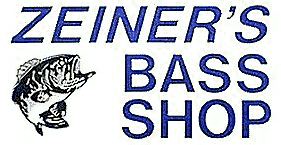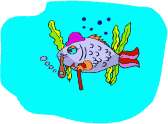 |
Fishing Stories from Ned Kehde |
|
Fishing Reports Reader's Nook Angler's Academy Club Corner Tournament Trail Success Stories Kansas Angler Info Angler Links |
Submitted by Ned Kehde - May 8, 2000 The Crappie Spawn Upon the arrival of May's new moon, thousands of crappie magically appeared upon the warm rocky banks at Perry Lake and stump-laden shores of Clinton and Hillsdale lakes, being driven by their urge to procreate. After April's continuous onslaughts of wind and cold fronts, the weather turned unseasonably balmy during the first week of May. And for the six days surrounding the new moon, the water temperatures steadily climbed into the upper 60s and even into the low 70s during the warmest and sunniest periods of a day, attracting waves of crappie from deep water into the shallows to spawn. The females came with their bellies protruding and even oozing with eggs. As they moved into the shallows, the males took on their courting colors, developing blackened bellies and cheeks with an iridescent and brassy hue along their backs. While the crappie anglers waited from late March and throughout April for the crappie to make this move, the bass fishermen enjoyed some superb angling, catching and releasing as many as 27 an outing at Perry. But as soon as the crappie appeared, the bass fishing became trying. Apparently the hordes of lustful crappies pushed lots of the largemouth bass out of the shallows. Some veteran anglers had never seen the crappie invade the spawning grounds so quickly and thoroughly. For instance at Perry on May 4, this phenomenon seemed to occur between 2 p.m. and 5 p.m. During this invasion, Jim Joy of Grantville caught and released 25 egg-laden females within 30 minutes at one spot. But before the crappie appeared, the fishing was so sour for the first 41 days of the spring that some veteran anglers worried that the crappie populations had declined so dramatically at area reservoirs that spawn would be marginal or worse. Yet once the crappie began to spawn, the fishing was so easy that the anglers said that their judgments about declining crappie populations must have been wrong. That, however, is a mistaken notion, or perhaps a piscatorial mirage. In the crappie fishing fraternity these hallucinations occurs twice a year. Once in the winter when the crappie congregate in massive schools, and then in May when they spawn. During the spawn, the crappie are only in only two to four feet of water, and they are so vulnerable that even the rankest beginner can catch crappie galore. That, of course, makes it seem as if the lakes are brimming with crappie even though the populations are actually flagging. And when the weather is perfect, as it was around this May's new moon, the crappie can be caught in a myriad of ways. For instance at Perry, Jim Joy caught and released scores of crappie by employing an ultra-light spinning outfit and casting and slowly retrieving a 1/32-pounce red-and-white jig. At Clinton, Mike Smith of Lawrence used a 10-foot pole and a small jig and extracted hundreds of them from around root wads in less than two feet of water. At the same time, Clyde Holscher of Topeka caught them at a variety of coverts by using a bobber and jig. At Hillsdale, Jeff Buckingham of Gardner and his youngest daughter enticed them by working with a minnow suspended under a bobber near the quarry in Wade Branch. And Steve Ortiz of Lawrence even caught them on a large spinnerbait while fishing for smallmouth bass at Melvern Lake. Traditionally, anglers can catch spawning, using a variety of tactics, until the first of June, and some years it doesn't peter out until Father's Day. #### The Bass Corridor
Since 1995, some members of the business community hereabouts have been touting the K-10 Corridor Technology Plan. Their idea is to turn the communities along Kansas Highway 10 into a replica of Austin, Tex, or Boulder, Colo. According to the proponents of this scheme, the corridor will start at the new Sprint campus at its eastern terminal and run past the Oz Park at De Soto, ending at the Kansas University Campus and a $21.8 million resort at Clinton Lake State park. The boosters sometimes call it "America's Smart Corridor." Once upon a time, before Austin and Boulder became polluted by the byproducts of the high-tech industry, they were paradises for anglers and hunters and were the hometowns of such famous fishermen as Ralph Manns and John Gierach. Now these environs are an outdoorsman's nightmare Thus, if Lawrence were to become another Boulder or Austin, real estate prices would skyrocket, and our Arcadian world would disappear. Then as the countryside vanishes, traffic congestion would reign. Such a quagmire is an anathema to most outsdoorsmen and other sane folks around eastern Kansas who don't want our rustic landscape to be cluttered with plastic, concrete and automobiles. That's why avid and talented anglers such as a Gail Bessey of Overland Park writes letters, castigating this plan. Other critics have begun to call this copycat project "America's Dumbest Corridor," and they ask why the world needs another Boulder or Austin, which are theselves imitations of Silicon Valley and North Carolina's Research Triangle. According to many observers, before the mid-1980s, Austin was a lot like Lawrence. It took only a few minutes to get to Lake Travis, and it was an easy drive to Lake Marbles Falls, Lake Buchanan, and Lake Lyndon B. Johnson. But since Dell Computer and other high-tech firms arrived, Austin has become so overbuilt that it is an arduous task to fish the four big reservoirs on its western outskirts. Moreover, those lakes are overcrowded. On the other hand, the Micropterus corridor on U.S. 75 is more to the liking of Bessey and other area bass anglers. It is where many bass fishermen from Johnson and Douglas counties go to escape the burgeoning chaos that clutters K-10 and Clinton Lake. This passageway to Kansas' piscatorial nirvana starts at Sabetha in the north and runs to Yates Center to the south. And some fishermen contend that it even extends past the town of Buffalo and Wilson State Fishing Lake, going all the way to Independence with Elk City Lake on its western flank and Big Hill Lake immediately to the east and Montgomery State Fishing Lake to the south. At most of the public waterways along this roadway, the largemouth bass is the most predominate game fish, but anglers can tangle with smallmouth bass and an occasional spotted bass. Some of the lakes are large, ranging from 5,000 to 7,000 acres, and other are small, encompassing less than a hundred acres. Such lakes as Banner Creek at Holton, Carbondale East and Lebo City Lake, which opened on May 6, charge an access fee. Day in, day out, the two best lakes are Holton's Banner Creek and Woodson State Fishing Lake near Yates Center. And when the wind dies, Coffey County Lake is the state's finest smallmouth abode. According to Bessey and her husband, Dick, the best way to catch scads of bass at these waterways during the summer is to employ a medium-action spinning outfit and a split-shot rig that is adorned with either a Berkely Power Tube or four-inch Power Worm. |
|
Kansas Angler Online Sponsor  |
Copyright 2000 by The Kansas Angler - P.O. Box 12261 - Wichita, KS 67211 - Phone 316-265-5551 Questions or problems with this website should be directed the link above. This Page Last Updated on date shown at top of page. |

